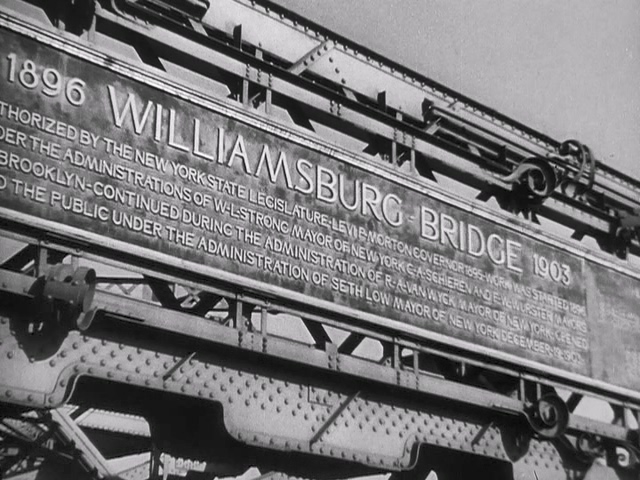| Description |
| On-screen: |
Sign for the Williamsburg Bridge |
| Description: |
The train rhythms continue underneath the Tone Poem B theme (associated with trains or the subway); on-screen we see the train go past and are shown the sign for the Williamsburg Bridge; the train rhythms begin to fade as we see people walking past and a cop approaching a man on the bridge |
| Music annotations: |
[m. 31] gliss; [m. 32] ff / sfz; [m. 38] simile; [m. 44] / dim / modto / sfz / p |
| Film annotations: |
[m. 39] Dissolve; [m. 44] Cop stops |
| Orchestration annotations: |
[m. 31] piccolo / str / W.W. / sopr saxes; [m. 32] 2 trbs; [m. 34] piano / harps / 2 saxes?? / a2 / a2 (hot); [m. 42] timp / tutti; [m. 43] sax gliss Briggs / 1 tenor sax gliss; [m. 44] gong mp |
| Analysis: |
The B theme is harmonized with a Db add9/add6 chord and features a bluesy countermelody in the brass; soon afterwards it shifts to E9, followed by chromatically sliding parallel 9th chords (Eb9 D9 Db9 C9 B9 Bb9) |
|
| Tags |
9th chord | added-note chord | bridge | busy | chromatic parallelism | city | combination of themes | countermelody | hurried | Mixolydian mode | old man | police | train | transition | traveling
|
Media |
